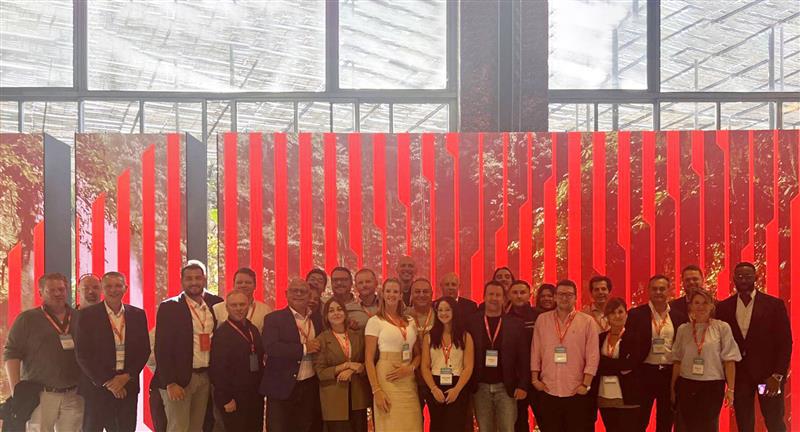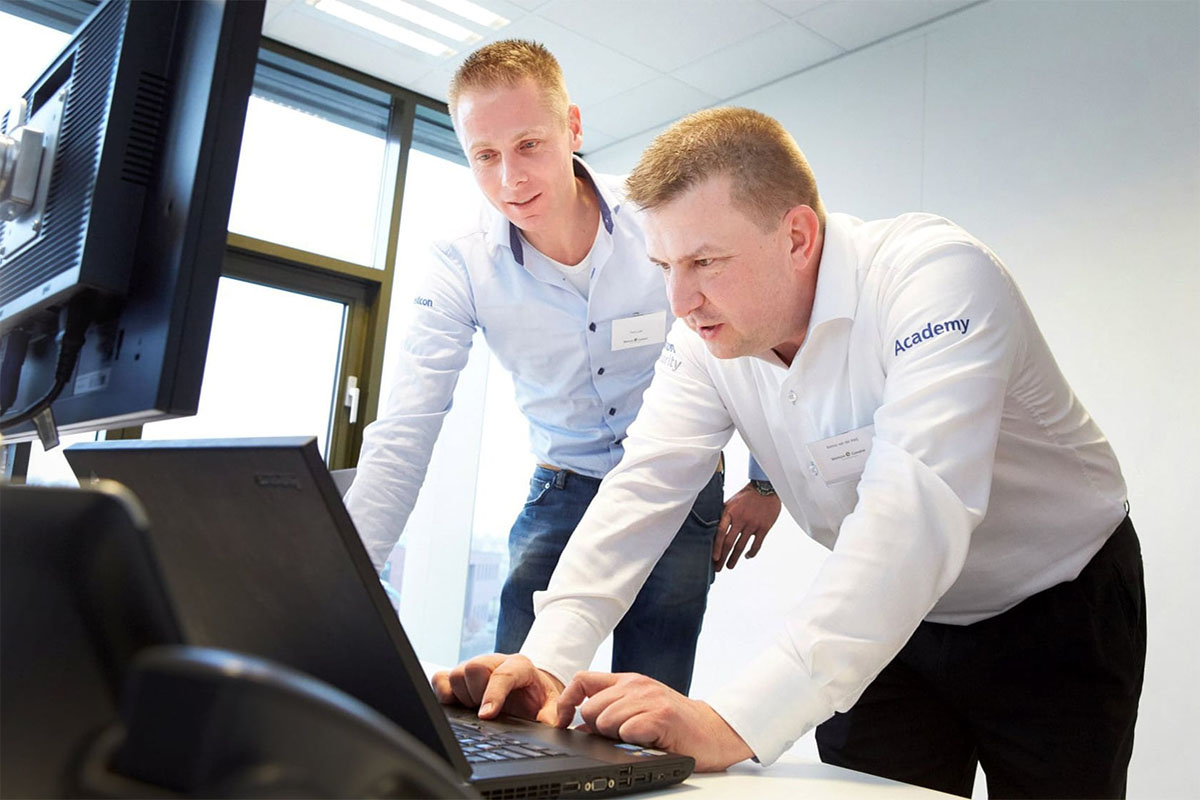
In 2020, almost every team was talking about remote work. How to do it effectively, what the challenges were, and if it was a good fit for them. In 2021, the conversation shifted to talk of the hybrid model. In 2022, how can organisations effectively combine a dispersed workforce of remote workers and in-person work at their office spaces?
Hybrid models can accommodate both those who prefer in-person and those who prefer remote work. As with most things, however, the easiest solution isn’t always the best. The hybrid model may seem like an easy solution, but it’s not without hurdles that must be overcome. Successful hybrid work is about adapting to how teams work best and creating experiences that work for everyone in four ways.
By 2023, 75% of G2000 companies will commit to providing technical parity to a workforce that is hybrid by design rather than by circumstance
1. Connectivity
“In the era of hybrid work, technology enables people to connect to anyone, anytime, anywhere and on any device. This has dramatically changed the way people work, enabling easier collaboration with colleagues who are dispersed across the world. It’s our role in distribution to make this happen.” Rakesh Parbhoo, CTO
Hybrid work looks different across business sizes and industries. But across the board, organisations are beginning to return to the office while employees working from home continue to use bandwidth and apps for collaboration.
However, simply investing in extra bandwidth and tooling isn’t enough. Employees now expect a great digital experience from their applications whether they’re in the office, at home, or anywhere else.
To make this happen, organisations must be able to deliver a consistent experience for collaboration and other critical applications across the entire network, within and beyond the perimeter, ensure all employee experiences are equal, and ensure workspaces have the connectivity, monitoring and automation to keep employees productive and safe.
2. Security
“The era of a defined perimeter is over – it’s time to rebuild your workforce security around identity. Meeting the challenges the new hybrid workplace presents means embedding a Zero Trust approach into the fabric of your network for a superior user experience. These principles, along with intelligent identity and access management, can help organisations achieve a new level of security posture and create a more productive employee experience.” Rene Klein, SVP Westcon Europe
The shift to hybrid work has changed the threat landscape and increased the attack surface. Workers are using multiple devices and connecting directly to the internet to access cloud applications.
Work that used to be done on managed endpoints is now happening on unmanaged ones. And adversaries are using pandemic-related content to launch attacks, increasing their focus on points of weakness in the security architecture.
A comprehensive security approach is needed that transforms networking and security to provide secure access wherever users and applications reside. This means Secure Access Service Edge (SASE), adoption of a Zero Trust approach to ensure secure remote access from anywhere and any device, reduced risk from compromised credentials, endpoint security to protect devices, and an Extended Detection and Response (XDR) platform to increase response speed.
3. Collaboration
“The workplace is evolving and it’s fundamentally changing how people work and collaborate. Tools such as Webex can help organisations prepare for the safe return to the office, and where work goes from here. From the home office to the board room, sensors, AI and automation can now provide intelligent experiences and drive changes that keep hybrid workers safe and productive.” Willem de Haan, SVP Comstor
There are now many ways for workers to collaborate in real time and offline, including calling, messaging, meetings, events, asynchronous video, polling, whiteboarding and more. Poor collaboration reduces engagement and inclusion, which can create misunderstanding and leave people feeling left out. For hybrid work to be a success, people need to have their voices heard, be included in conversations and keep all team members engaged.
Work styles and preferences are different for everyone and there is no one-size-fits-all approach. Collaboration for hybrid work needs flexibility and choice. Modern collaboration tools and platforms create experiences that go beyond the basics by offering features and enhancements that are more inclusive and engage everyone.
Mobile access to meetings is on the rise as people increasingly work from anywhere, while AI-enhanced meeting features, such as noise cancellation and virtual backgrounds, are being rapidly adopted to enhance experiences.
4. Culture
“With hybrid working set to remain a key feature of our post-COVID-19 future, employers need to understand how to help their employees maintain their mental health and wellbeing, and ensure those who need support receive it” Donna Bain, SVP People and Development
Understanding employee needs and expectations is critical to attract and retain top talent. Employees today want more flexibility and more of a voice in where, when and how they work. Hybrid work allows this, enabling organisations to nurture flexibility, choice and inclusion for both employers and employees alike. But this comes with challenges:
- There is no one-size-fits-all
- Work experiences, workstyles and preferences are varied and personal
By listening to employees and allowing managers and their teams to determine the hybrid work models that work best for them, organisations can empower their people to focus on making hybrid work, work for them.
Hybrid is here to stay
“Using scattershot tactics to connect and secure your hybrid work model leaves you unprotected and inefficient. A better approach? Taking the necessary steps to ensure technical parity and a consistent experience for every employee, and defend your network against evolving cyberattacks with a Zero Trust approach across the entire organisation.” Patrick Aronson, EVP Westcon-Comstor APAC
Organisations are beginning to realise the unexpected challenges the hybrid model presents. These challenges are mostly borne of the need to ensure a secure, consistent experience for all employees, regardless of whether they work in the office or remotely.
At Westcon-Comstor, we have the solutions, experience and expertise in hybrid working to make the transition seamless and successful. Get in touch to better understand how we can address your specific challenges.
At Westcon-Comstor, we deliver the solutions and services businesses need to transition successfully to a hybrid work model. Contact your account manager today, or read our other blog:





